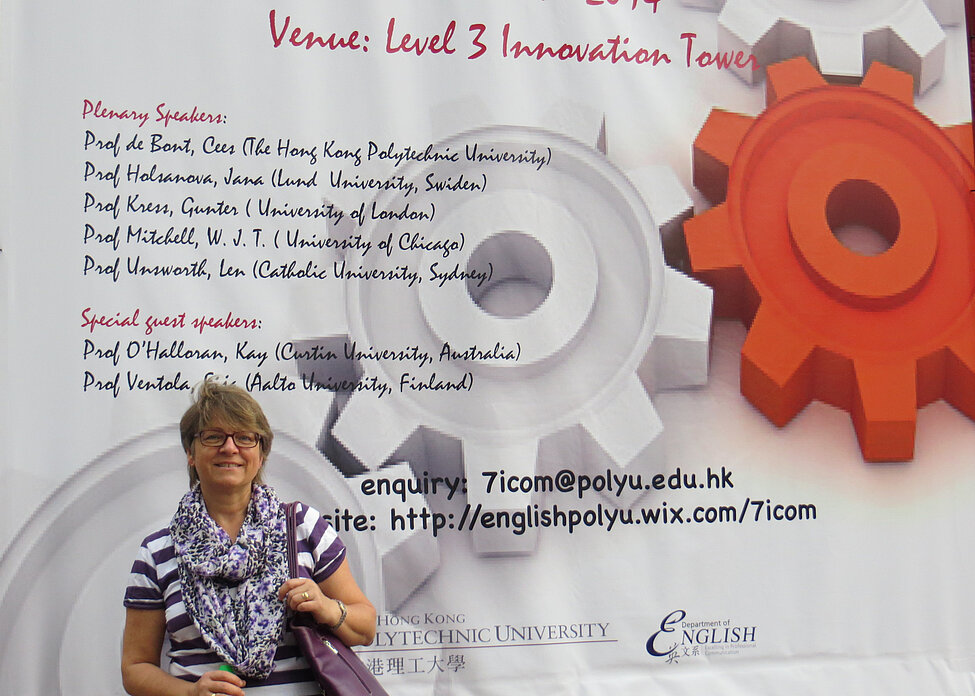Multimodal research in focus in Hong Kong
By 11 -
Published 30 September 2014

http://www.lucs.lu.se/wp-content/uploads/2014/09/New-image1.jpgJana Holsanova has delivered a plenary talk entitled Reception of Multimodality: Applying eye-tracking methodology in multimodal research at the 7th International Conference on Multimodality organised by the English Department, Hong Kong Polytechnic University.AbstractThe aim of most producers and designers is to create an aesthetically appealing, effective and user-friendly multimodal text design that makes it easy for the user to find, process and understand information (Holsanova & Nord 2010). However, design is not only a product of the design process, an organized arrangement of one or more elements that has been created in order to serve a certain purpose. It can also be conceived of as a starting point for interpretation processes since it invites the user to a certain interaction (Holsanova 2010). Thus, multimodality can be studied from both a production and a reception perspective. Whereas the production aspect focuses on how information in multimodal messages is presented by the sign-maker or designer, the reception aspect emphasizes how multimodal messages are perceived by the users (Holsanova 2012). In my presentation, I will focus on the reception of multimodality and show how eye-tracking measurements, in combination with verbal protocols, interviews, comprehension tests and questionnaires, can be used in research on multimodality. I will summarise various application areas associated with the use of eye-tracking methodology, account for potentials and limitations of this methodology, and provide examples from eye-tracking studies focusing on the integration of various modes. I will argue that interdisciplinary framework and integrated methods are preferable when studying reception aspects of visual communication and multimodality (Holsanova 2014).
2024-10-20
Peter Gärdenfors receives the Jean Nicod Prize 2025 (The Institut Jean Nicod)
2024-10-18
LU-informationsvideo med Jana Holsanova: "Samverkan för bättre syntolkning"
2024-10-03
Peter Gärdenfors at The University of Liverpool Evolutionary Anthropology Webinar Talk
2024-10-01
Epi (LUCS Robotics) performing as "the emotional support karaoke bot" at Malmö Gallery Weekend 2024.
2024-09-26
3 x LUCS på Bokmässan 2024 i Göteborg, 26–29 september.
